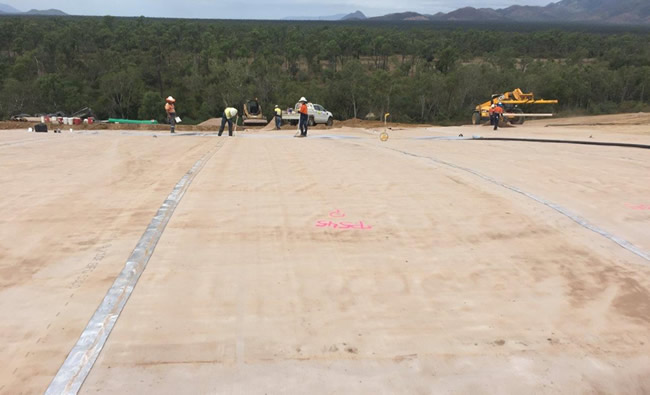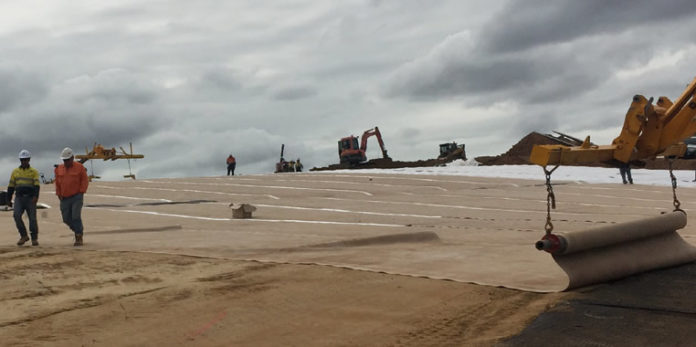The City of Townsville in northern Queensland is Australia’s largest urban center north of the Sunshine Coast. The local Waste Services Department serves nearly 200,000 residents. When the time came to improve stormwater management and install capping on the city’s two largest waste facilities, engineers selected a multi-component geosynthetic clay liner for the essential containment on both projects.
The coated GCLs are part of the next generation wave in geosynthetic clay barrier technology. The extrusion coating enhances the performance and security of a GCL (or, bentonite mat).
For the Queensland installations, they utilized NAUE’s Bentofix® X10F, which use a polyethylene (PE) extruded coating.
The benefits in these design and material selection decisions are summarized below. They exemplify changes that are occurring in landfill capping design not just in Australia but in many regions of the world.

COATED GCLS AT STUART LANDFILL
The Stuart Landfill required a previous cap to be extended while surface water would be managed through berms and channels. Stormwater runoff would then be collected in sediment ponds and leachate ponds.
The previous capping work on the site had used a Bentofix® GCL, which is the non-coated version. Golder Associates approach the design in the same way as the first capping project, but this time specified the use of a coated product.
RELATED: Flood Protection – Rehabilitation of a Dike in Germany
The PE-coated GCL Bentofix® X10F offered a frictional surface for very good interface shear values on steep slopes; greater safety against bentonite desiccation; enhanced gas barrier performance; and, greater safety against potential ion exchange and root penetration.
The barrier design also helped reduce the required cover soil thickness due to the presence of the extruded PE coating on the GCL, which protects the GCL against desiccation at low confinement.
MULTI-COMPONENT GCL FOR HERVEY RANGE
The Hervey Range Landfill also required capping and stormwater management updates, but the long slope lengths, relative steepness, and adjacent waterway presented a good challenge to the capping works.
As with the Stuart Landfill, Golder Associates handled the project. Again, they centered the design around the use of coated GCLs. Bentofix® X10F was selected, for similar reasons: enhanced frictional characteristics, strong gas barrier performance, resistance against desiccation with reduced cover soil thickness, etc.
As is recommended for this variety NAUE’s GCLs, the rolls were installed with the coated side facing upwards. A geonet composite drain was also placed on top of the coated GCL for collection of surface water. The combination of these materials (the coated side immediately below the geonet) increased protection against any potential bentonite erosion. Also, the coated surface guarded against the possibility of the GCL intruding upon the geonet.
The design smartly addressed one of the cautions expressed in the internationally influential GRI-GCL5 guide. That document notes that multi-component GCLs can mitigate this concern. Coated Bentofix® X types are part of those multi-component GCL solutions.
Butyl tapes, applied to the GCL coated side, were used to seal the joints between adjacent Bentofix® panels to further strengthen the gas barrier performance.
Some 100,000m2 of Bentofix® X10F BFG 5300 coated GCL were installed across the two Townsville sites.
Learn more about coated GCLs and NAUE’s engineered materials and engineering services at www.naue.com.
A version of this story was first published in NAUE News #49 (December 2019).












